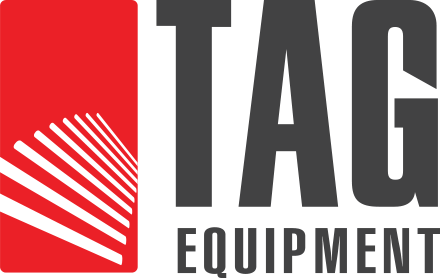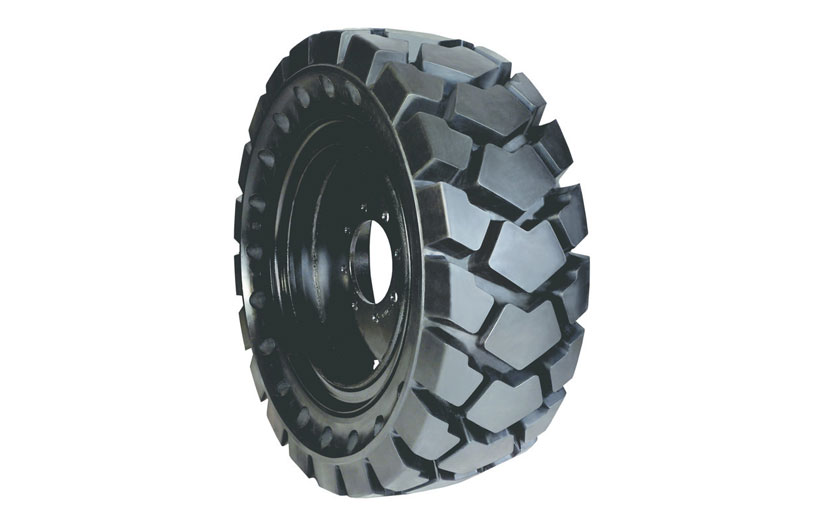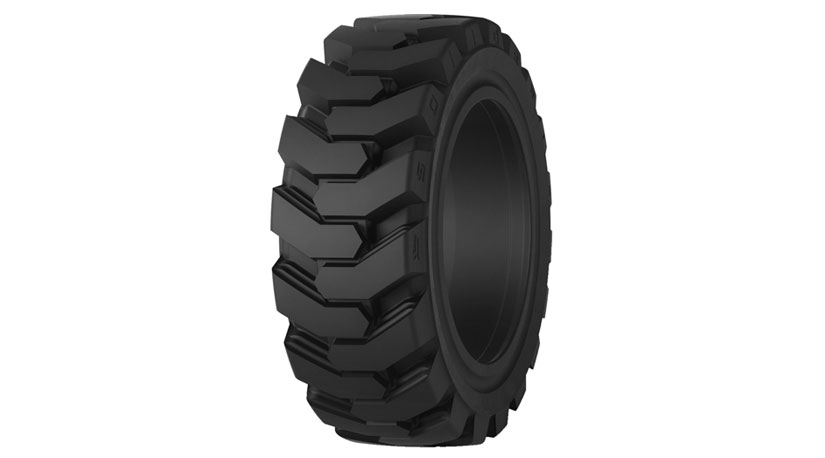Flat-proof tires have revolutionized the world of heavy machinery and off-road equipment, offering a solution to one of the most common and disruptive problems operators face—flat tires. Understanding the technology behind flat-proof tires is crucial for maximizing their benefits and ensuring the optimal performance of equipment like skid steer loaders. In this article, we delve into what flat-proof tires are, the types available, the core technology, their advantages, environmental impact, and the latest innovations in the field.
What Are Flat Proof Tires?
Flat-proof tires are designed to eliminate the risk of flats, providing continuous operation without interruptions caused by punctures or air pressure issues. They are available in various forms, each engineered to meet specific performance requirements and applications.
Types of Flat Proof Tires
Flat-proof tires come in various types, each designed to meet specific operational needs and conditions. The main types include solid rubber, foam-filled, and airless tires. Understanding these types can help you choose the right tire for your skid steer loader or other equipment.
Solid Rubber Tires
Solid rubber tires are made entirely of solid rubber or a combination of rubber and other compounds. These tires do not require air, which makes them immune to punctures and flats.
- Composition: Solid rubber tires use high-quality rubber compounds mixed with additives to enhance durability and performance. The rubber is often reinforced with steel belts or fibres to increase strength and resistance to wear and tear.
- Advantages: These tires are known for their exceptional durability and long lifespan. They are virtually maintenance-free since there is no need to monitor air pressure or repair punctures. Solid rubber tires provide a stable and secure base, improving the handling and stability of the machine. They are ideal for harsh working environments such as construction sites, scrap yards, and demolition sites where the risk of punctures from sharp debris is high.
- Applications: Solid rubber tires are commonly used in construction, mining, and industrial settings where durability and reliability are paramount. They are perfect for heavy-duty tasks that require continuous operation without the risk of tire damage.
Foam-Filled Tires
Foam-filled tires are pneumatic tires filled with polyurethane foam, converting them into solid tires while retaining some characteristics of pneumatic tires.
- Foam Filling Process: The process involves injecting a liquid polyurethane foam into the tire. As the foam cures, it expands and solidifies, filling the tire and making it puncture-proof.
- Benefits: Foam-filled tires combine the advantages of pneumatic and solid tires. They provide a comfortable ride similar to pneumatic tires because the foam filling can absorb shocks and vibrations. The added weight from the foam also improves the machine’s stability, which can be beneficial in certain applications. Additionally, these tires eliminate the risk of flats, reducing downtime and maintenance costs.
- Common Uses: Foam-filled tires are ideal for applications where comfort and durability are important. They are often used in construction, agriculture, and landscaping. These tires are beneficial for equipment that operates in environments with a moderate risk of punctures but still requires a smoother ride.
Airless Tires
Airless tires, also known as non-pneumatic tires (NPT), are designed without air and use structural supports to maintain their shape and performance.
- Design: Airless tires typically feature a unique design, such as a honeycomb or spoke structure, that provides the necessary support and flexibility. These structural elements allow the tire to deform and absorb shocks while maintaining its shape and load-bearing capacity.
- Key Features: The primary advantage of airless tires is their resistance to punctures and damage from rough terrain. They do not require air pressure maintenance and are virtually immune to flats. Airless tires also provide excellent stability and load distribution, which can enhance the performance of the equipment.
- Usage: These tires are commonly used in military applications, off-road vehicles, and equipment that operates in extremely harsh environments. They are ideal for scenarios where reliability and durability are critical and where tire failure could lead to significant downtime or safety hazards.
Choosing the Right Type
When selecting flat-proof tires for your equipment, consider the specific needs of your application. Solid rubber tires are best for environments with a high risk of punctures and heavy-duty tasks. Foam-filled tires offer a balance of comfort and durability, making them suitable for applications that require a smoother ride. Airless tires are ideal for harsh conditions where reliability and puncture resistance are crucial.
By understanding the different types of flat-proof tires and their benefits, you can make an informed decision that will enhance the performance and efficiency of your skid steer loader or other heavy equipment.
The Core Technology Behind Flat Proof Tires
The technology behind flat-proof tires combines advanced materials, innovative manufacturing processes, and sophisticated design features.
Materials Used
The materials used in the construction of flat-proof tires are crucial for their performance and durability. Here are the primary materials involved:
- Rubber Compounds: High-quality rubber compounds form the base material for most flat-proof tires. These compounds are formulated to provide flexibility, strength, and resistance to wear and tear. The rubber is often mixed with additives to enhance its properties, such as increased resistance to cuts and abrasions.
- Polyurethane: In foam-filled tires, polyurethane foam fills the pneumatic tire, converting it into a solid tire. Polyurethane is chosen for its excellent load-bearing capacity, shock absorption, and resistance to punctures and chemicals.
- Reinforcements: Many flat-proof tires incorporate reinforcing materials like steel belts, nylon, or Kevlar fibres. These materials provide additional strength and stability, helping the tires withstand heavy loads and harsh operating conditions.
The combination of these materials ensures that flat-proof tires can reliably perform in various environments, from construction sites to agricultural fields.
Manufacturing Process
The manufacturing process of flat-proof tires involves several key stages, each critical to the quality and performance of the final product. Here is a step-by-step explanation:
- Material Preparation: The first step involves preparing the rubber compounds and other materials. This includes mixing the rubber with additives and preparing the polyurethane foam if foam-filled tires are being produced.
- Moulding: The prepared materials are then placed into moulds that shape the tire. For solid rubber tires, the rubber compound is injected into moulds under high pressure to ensure uniformity and strength. For airless tires, the structural design (such as honeycomb or spoke structures) is formed during this stage.
- Curing: After moulding, the tires undergo a curing process. This involves heating the tires to vulcanize the rubber, which hardens it and enhances its durability. Curing is critical to ensure the tire can withstand heavy use and extreme conditions.
- Foam Filling (for Foam-Filled Tires): For foam-filled tires, the curing process is followed by injecting polyurethane foam into the pneumatic tire. The foam expands and solidifies, filling the entire cavity and converting the tire into a solid state.
- Quality Control: The final step is rigorous quality control. Each tire is inspected for defects and tested to ensure it meets the required performance standards. This includes checking the uniformity, strength, and durability of the tires.
The manufacturing process is designed to produce tires that are flat-proof and capable of delivering high performance in various applications.
Design Features
The design features of flat-proof tires are essential to their functionality and performance. Here are some innovative design aspects that contribute to their effectiveness:
- Tread Patterns: The tread pattern on flat-proof tires is designed to provide optimal traction and handling. Various patterns are used for different applications, such as deep treads for muddy conditions or shallower treads for smoother surfaces.
- Internal Structure: The internal structure is a key design feature for airless tires. Honeycomb or spoke designs provide the necessary support and flexibility, allowing the tire to absorb shocks and maintain its shape under load.
- Reinforcement Layers: Many flat-proof tires include multiple layers of reinforcing materials. Steel belts, nylon, or Kevlar fibres are integrated into the tire to provide additional strength and stability, ensuring the tire can handle heavy loads and resist punctures.
- Sidewall Design: The sidewalls of flat-proof tires are designed to withstand impacts and provide lateral stability. This is particularly important in off-road and construction applications, where the tires are subject to side impacts from debris and obstacles.
- Heat Resistance: Flat-proof tires are often designed with heat-resistant materials and features. This allows them to perform reliably in high-temperature environments, such as industrial or construction settings.
These design features ensure that flat-proof tires can deliver superior performance, durability, and reliability, making them an excellent choice for various applications.
Advantages of Flat-Proof Tire Technology
Durability and Longevity
The technology behind flat-proof tires significantly extends their lifespan. These tires can endure harsh environments without suffering frequent damage, leading to less downtime and fewer replacements. For example, in construction sites with sharp debris, flat-proof tires maintain their integrity where pneumatic tires would fail.
Safety and Reliability
Safety is a major advantage of flat-proof tires. The elimination of flats reduces the risk of sudden tire failure, which can be dangerous in high-risk environments. Their reliability in various working conditions, including rocky terrains and industrial sites, ensures consistent performance.
Performance Efficiency
Flat-proof tires offer superior performance efficiency compared to traditional pneumatic tires. They provide better traction, stability, and load-bearing capacity. For instance, skid steer loaders equipped with flat-proof tires can operate more efficiently, increasing productivity and reducing operational costs.
Environmental Impact of Flat-Proof Tires
Sustainability
Flat-proof tires contribute to sustainability by reducing waste. Their long lifespan means fewer tires are discarded, and their durability minimizes the need for frequent replacements, which helps conserve resources.
Recyclability
Many manufacturers are focusing on improving the recyclability of flat-proof tires. Programs are being developed to recycle rubber and other materials, turning old tires into new products and reducing environmental impact.
Environmental Benefits
The reduced need for replacements and the lower frequency of tire disposal result in a smaller environmental footprint. Additionally, the use of materials that can be recycled further enhances their eco-friendliness.
Innovations in Flat-Proof Tire Technology
Recent Developments
Recent advancements in flat-proof tire technology include the development of new rubber compounds and designs that enhance performance. Innovations like the Tweel by Michelin represent significant progress in airless tire technology, offering improved durability and ride quality.
Future Trends
The future of flat-proof tire technology looks promising, with ongoing research into new materials and designs. Emerging technologies, such as smart tires with embedded sensors to monitor tire condition and performance, are expected to revolutionize the industry.
Embracing Flat-Proof Tire Technology
Understanding the technology behind flat-proof tires is essential for making informed decisions about equipping your skid steer loaders and other heavy machinery. The benefits of durability, safety, and performance efficiency make flat-proof tires a valuable investment. These tires will become even more effective and environmentally friendly as technology evolves. Consulting with experts and obtaining high-quality flat-proof tires from reputable suppliers like Tag Equipment is a smart move for professionals looking to optimize their equipment. Embrace the future of tire technology and ensure your equipment performs at its best in all conditions.
Contact the team at Tag Equipment today for more information and to explore a wide range of flat-proof tires.


